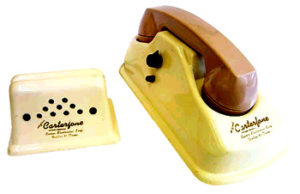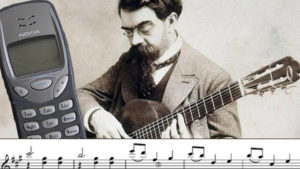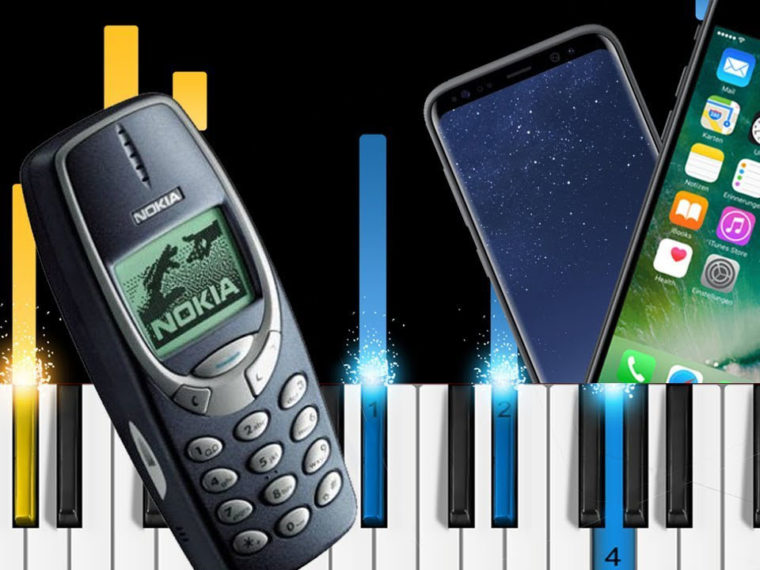One of the most ubiquitous sounds of modern times is the cellphone ringtone. Whether you are on the road, in a café or in office, you just can’t miss that sound emanating from either your own phone, or from someone near you. The ringtone of the modern smartphone has indeed come a long way from the monotonous call of the old landlines. So today, let us take a quick dive through the history of the cellphone ringtone, and see how it evolved from the simple monotonic ring to the a million dollar industry.
The Unexpected Side-Effects Of The Carterphone
 The origin of the cellphone ringtone can be traced back to the Carterphone, which was a non-AT&T device that could be used to connect to the telephone system. Previously, only AT&T equipment could be used with the telephone networks; however, in 1968, the US Federal Communications Commission, despite severe opposition, allowed the use of non-AT&T devices in telephony. This seemingly unrelated judgment paved the way for the introduction of more novelty telephonic devices with custom ringtones.
The origin of the cellphone ringtone can be traced back to the Carterphone, which was a non-AT&T device that could be used to connect to the telephone system. Previously, only AT&T equipment could be used with the telephone networks; however, in 1968, the US Federal Communications Commission, despite severe opposition, allowed the use of non-AT&T devices in telephony. This seemingly unrelated judgment paved the way for the introduction of more novelty telephonic devices with custom ringtones.
The Ringtone Culture Begins
Although the old phones offered the monotonic “tring-tring”, modern ringtones first started to appear around the 1960s. Manufacturers started to include custom ringtone chips with their cellphones. The more tech-savvy users also took to creating their own ringers from the music modules available in greeting cards. Ringtones ranged from animal calls to custom sounds, though these were mostly monophonic.
The Signature Tune
 It was the now legendary Nokia which took the ringtone revolution to the next level. Working with British musician Thomas Dolby’s company Beatnik, Nokia was the first to introduce software-based ringtones in its line of devices. The “Nokia Signature Tune”, perhaps one of the most recognizable sounds in the world even today, was based on a 1902 composition by Francisco Tarrega.
It was the now legendary Nokia which took the ringtone revolution to the next level. Working with British musician Thomas Dolby’s company Beatnik, Nokia was the first to introduce software-based ringtones in its line of devices. The “Nokia Signature Tune”, perhaps one of the most recognizable sounds in the world even today, was based on a 1902 composition by Francisco Tarrega.
Polyphonic And Beyond
As more and more commercial cellphones began integrating the ringtone feature, the sounds evolved from single tones to polyphonic ringtones playing several notes. Downloadable ringtones were also introduced; popular song excerpts began to be used as ringtones, and now, in the smartphone era, users have the choice of using any song as their phone’s callout.
The Future – Pure Taboo
 Polyphonic melodies are going to stay a good memories but the future doesn’t wait. We are fully involved in digital era and projects like Pure Taboo are natural continuation of evolving. Taking this exact series as example you are going to experience visuals of our society’s most intimate and darkest fantasies. Often spited by general public they bring specific audience and are extremely popular in certain communities. You need to see yourself what’s the stir all about.
Polyphonic melodies are going to stay a good memories but the future doesn’t wait. We are fully involved in digital era and projects like Pure Taboo are natural continuation of evolving. Taking this exact series as example you are going to experience visuals of our society’s most intimate and darkest fantasies. Often spited by general public they bring specific audience and are extremely popular in certain communities. You need to see yourself what’s the stir all about.
The ringtone industry now runs to the tune of hundreds of millions of dollars. With more and more popular musicians jumping on to the ringtone bandwagon, it’s safe to say that ringtones will remain the dominant music in our ears for a longtime.
